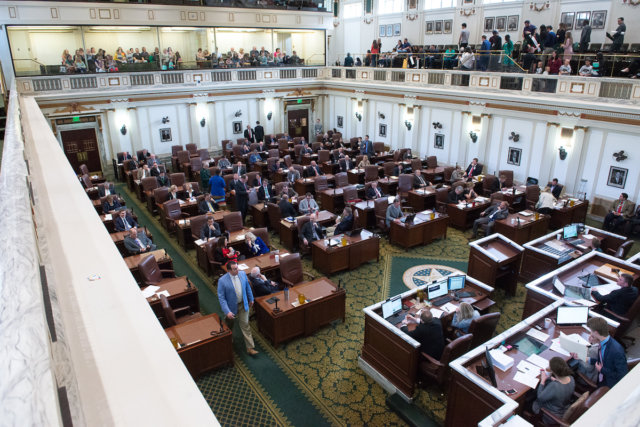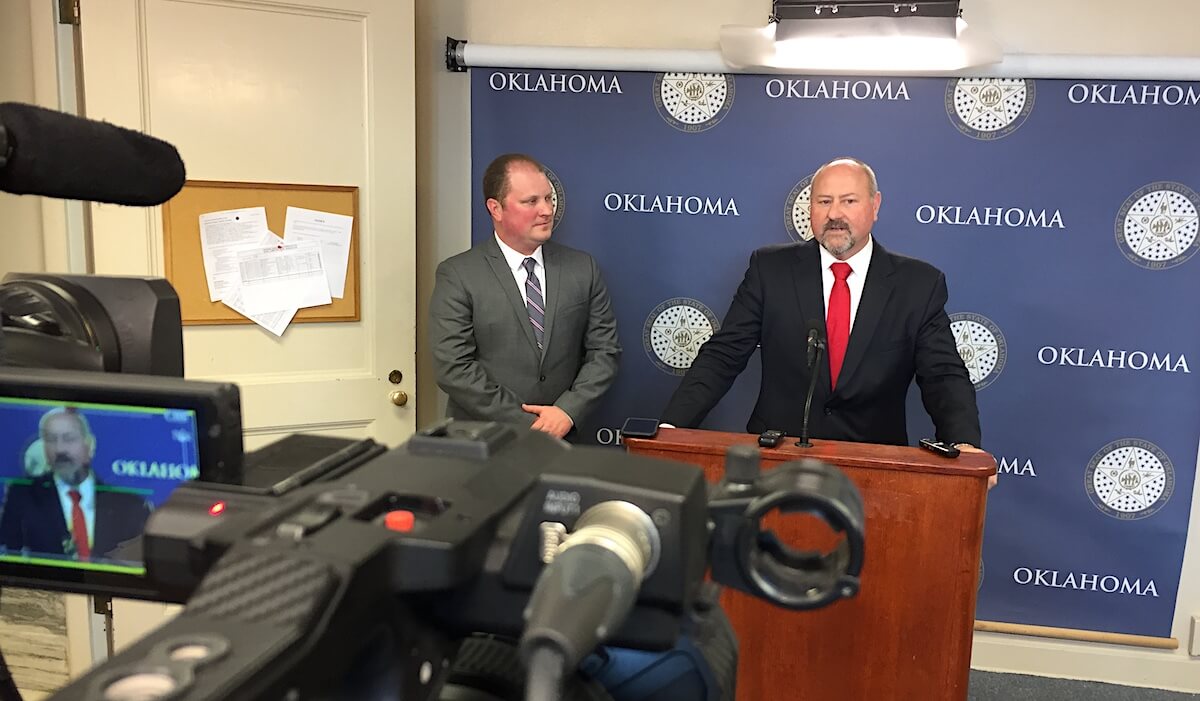

Oklahoma’s Republican legislative leaders maintain that they will strike a budgetary agreement within weeks and build upon last year’s historic investment in education. Democrats, on the other hand, say the Legislature has already failed its responsibilities by not meeting an April 1 deadline of “full funding” for common education passed into statute in 2003.
“We believe we could have easily met the April 1 deadline if there had been a political will to do so,” Senate Minority Kay Floyd (D-OKC) said Thursday. “We’ve had over two months to get this done, and instead we spent time on other things that weren’t as pressing and bills that would have passed no matter when we ran them because they were popular.”
Republicans sing a different tune. Targeting an arbitrary date in the middle of session, they say, does nothing to increase the amount of dollars going to classrooms or teacher salaries.
“In order to [have an education budget by April 1], you have to know the rest of the agencies’ budget requests and what you’re going to give them,” House Appropriations and Budget Chairman Kevin Wallace (R-Wellston) said. “In all honesty, you cannot come up with that budget or really any other budget by April 1 without giving sincere consideration for all agency budgets.”
House Majority Floor Leader Jon Echols agreed.
“If we were to have passed an education budget this year by April 1 without having the full budget, it would have been a much smaller education budget than I think we will eventually end up with,” said Echols (R-OKC).
Echols and Wallace discussed the issue during a press availability Thursday, saying the April 1 deadline’s function has changed since 2003.
“It no longer serves the same purpose,” Echols said. “At the time, teaching contracts were signed at the end of the year, and schools needed to know how much funding they were going to have for that year. That’s not the way it works anymore.”
Not all lawmakers agree.
“By funding education earlier in the spring, we are giving administrators the ability to hire and retain educators at time when the rest of the country is doing the same,” Rep. Melissa Provenzano (D-Tulsa) said in an April 1 press release from House Democrats. “It also provides teachers with more financial security or more time to plan.”
Meeting April 1 deadline in 2018 took specific circumstances

Owing to 12-year term limits, no member of the 2003 Oklahoma Legislature remains in office today. A handful are lobbyists, and former Sen. Jonathan Nichols (R-Norman) serves as senior policy advisor and legal counsel to House Speaker Charles McCall (R-Atoka). Beyond that, only legislative staff, a few journalists and other lobbyists possess institutional knowledge dating back to 2003.
As best anyone can recall, the Legislature has met the consequence-free April 1 deadline only twice: Once when Gov. Brad Henry vetoed the education budget and once last year, days ahead of a threatened teacher walkout that happened anyway.
“By the time the funding and the teacher pay raise became a reality, we were just [days] from the walkout. Teachers had been clear. Educators had been clear they were going to be at the Capitol,” Floyd said. “To give them a pay raise in the hopes it was going to be enough when our caucus was saying, ‘That’s not enough,’ that was not going to stop the walkout.”
Similarly, Republicans note that their ability to pass an education budget in March 2018 was aided by unique circumstances. For instance, the Legislature had been in almost continuous session since February 2017 trying to strike a bipartisan agreement on a new revenue package.
“We did do that last year,” Wallace said of meeting the April 1 deadline. “A lot of people probably didn’t realize, but the budgets were worked out when we delivered that (education) budget. We had to finalize a few more pieces of legislation, but we knew what was going to be in everybody’s budget.”
Wallace said the common education budget passed last year by lawmakers featured a 19 percent increase in funding, roughly $481 million.
“We’re going to make another investment in education again this year,” Wallace said. “But I also want to tell you that, over the past 10 years of history of agencies, a lot of agencies have been cut significantly. I believe all ships rise with the tides. So there will be other investments in other agencies, as well as education.”
Wallace: Higher education also likely to see increase
Even surrounding budget negotiations for common education (kindergarten through 12th grade), other components of the state’s education system affect what dollars are available.
In his office Wednesday, Wallace said he believes higher education and career tech centers will also receive increased appropriations for next fiscal year.
“I know that we have created somewhat of a problem because higher ed has been cut quite a few years,” he said. “With the teacher pay raises, I’ve heard from some of the smaller colleges that they are losing their professors and staff because they can go back to K-12 and make more money. So I do think it is a very reasonable ask that we need to look at and probably adjust.”
With money flowing through the Regents for Higher Education, Oklahoma funds 27 public colleges and universities with 49 campuses, an expansive footprint that entices some to call for consolidations but leaves few lawmakers willing to support the decentralization of college administrations.
“It’s not a very popular push to move somebody’s college out of their district,” Wallace said.
Still, former Gov. Mary Fallin issued a November 2017 executive order mandating that the Regents for Higher Education create a plan for “administrative consolidation” among state colleges and universities. The order set a December 2018 deadline for completion of the plan and a December 2019 requirement for its implementation.
While the Regents for Higher Education website features a 200-page Report on the Future of Higher Education from February 2018, an administrative consolidation plan does not appear on the regents’ “studies and reports” page. Assistant Secretary of State Donelle Harder said the administrative consolidation report was submitted to Gov. Kevin Stitt’s office in March “and it is currently being reviewed.”
Meanwhile, Oklahoma’s two largest universities — OU and OSU — receive the lion’s share of appropriated dollars. With new OU President Jim Gallogly tightening the university’s fiscal belt and trying to address what he calls “significant inefficiencies,” some believe lawmakers may be more comfortable with restoring cuts to the higher education system this year.
“I do find it very refreshing for somebody (to be) in higher ed like President Gallogly,” Wallace said. “I know that he’s not necessarily popular among the higher (education) regent universe.”
Senate President Pro Tempore Greg Treat (R-OKC) also praised Gallogly.
“Having somebody who is equally as serious of being a good steward of taxpayer dollars is positive in my mind,” Treat said Thursday.
April 1 deadline ‘is symbolic’
How much money higher education and other core areas of government ultimately receive can affect the Legislature’s common education budget. With that in mind from year to year, the Legislature could move to eliminate the April 1 funding deadline at some point.
Floyd said that would be a bad idea, one she said she voted against during her first committee hearing as a member of the Oklahoma House in 2013.
“In one sense, it is symbolic,” Floyd said of the April 1 deadline. “It says we believe this is an important enough issue that we are going to give ourselves a deadline to fund education.”
But with the deadline come and gone, Floyd is also asking Republicans for more opportunities for Democrats to digest information about the budget negotiations.
“We don’t want to see this rushed,” she said. “Things are moving pretty smoothly. We’ve got time to sit down and visit about the budget and make sure it’s what is best for the state.”




















